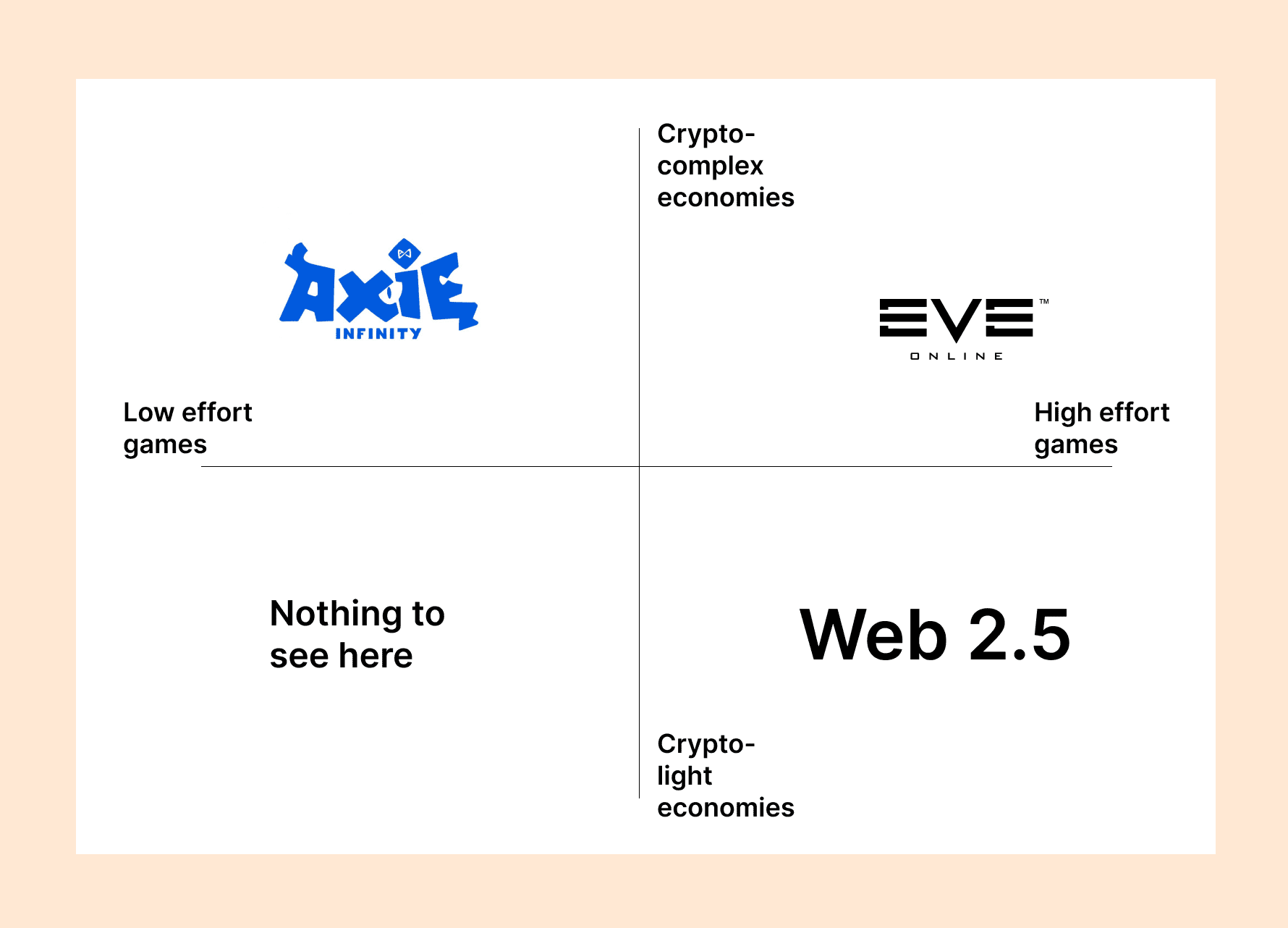Building a Web3 Game: Best Practices and Examples (Part 3)
Welcome to the final installment of our three-part series on Web3 gaming. In the first part, we introduced you to the transformative potential and challenges of Web3 in gaming. In the second part, we explored the essential tools and technologies you'll need to kickstart your Web3 gaming project.
- Part 1: Introduction to Web3 Gaming Infrastructure
- Part 2: Tools for Web3 Game Development
- Part 3: Best Practices and Case Studies (You are here)
Comprehensive Success Metrics for Web3 Games
Evaluating the success of web3 games requires a nuanced approach that includes both traditional gaming metrics and specific indicators unique to the web3 ecosystem. This dual measurement strategy allows developers to gain insights into both the general appeal of the game and its performance within the blockchain-based gaming market.
Traditional Gaming Metrics:
- Daily/Weekly/Monthly Active Users (D/W/MAU): Track the number of unique players engaging with the game each day. This metric is crucial for understanding the game's daily engagement level. - Player Retention (Retention Curves): Measure the percentage of players who return to the game over time, indicating the game's ability to maintain player interest. - Lifetime Value (LTV): Calculate the total revenue expected from a player throughout their interaction with the game, which helps in understanding long-term profitability. - Average Revenue Per User (ARPU) and Average Revenue Per Paying User (ARPPU): Assess the revenue generated on average by each player and by each paying player, respectively. - Player Ratings and Reviews: Monitor user feedback across various platforms. This qualitative metric provides insights into player satisfaction and areas for improvement. - Conversion Rate: The percentage of players who make in-game purchases or subscribe to premium features, indicating the effectiveness of monetization strategies. - Advertising and User Acquisition Costs (CAC): Analyze the costs related to marketing efforts and compare them to the LTV of acquired players to evaluate the efficiency of these tactics.
Web3-Specific Metrics:
- Transaction Volume: Look at the total number and value of blockchain transactions within the game. This metric can indicate the game's popularity and the level of player engagement with the blockchain elements. - Token or Item Holders: Track the number of players holding in-game tokens or blockchain-based items. A high number can signal a strong player investment in the game's economy. - Secondary Market Statistics: Analyze data from secondary sales, such as pricing and volume, and observe player behaviors in trading and utilizing their assets. This helps in understanding the external economic impact of the game. - Onchain Interactions: Evaluate how players interact with blockchain features, such as smart contracts or decentralized finance (DeFi) elements. This can provide insights into how well these features are being received and used. - Cross-Game Interoperability: For games allowing item usage across multiple platforms, assess the frequency and manner of these cross-game interactions. This can indicate the game’s reach and the value of its items beyond the primary gaming environment.
These metrics help you get a better sense of which building blocks to utilize for your game. However, understanding them in context can be challenging. Let's work through two hypothetical cases to illustrate these concepts more clearly.

Hypothetical Case Studies
AAA PC RPG Game
For a AAA PC RPG game, traditional gaming metrics such as D/W/MAU, player retention, and LTV are particularly crucial due to the game's complex nature and high production value. These metrics will help you understand player engagement and long-term profitability.
Traditional Metrics Emphasis:
- Daily/Weekly/Monthly Active Users (D/W/MAU): Vital for understanding the daily and ongoing engagement levels in a game with rich, immersive content.
- Player Retention: Important for ensuring that players continue to find value and enjoyment over extended periods.
- Lifetime Value (LTV): Crucial for gauging long-term financial sustainability, given the significant investment in development.
Web3 Metrics Integration:
- Transaction Volume and Token Holders: These metrics can reflect the extent of player engagement with the game's economy and blockchain elements.
- Onchain Interactions: Reflects how effectively players are using blockchain features, crafting, updating metadata, apying in finantialization fo the game, etc.
Mobile Card Collecting Game (Web2.5)
For a mobile card collecting game, simpler gameplay and likely shorter session times shift the focus toward metrics that reflect transaction volume and user accessibility.
Traditional Metrics Emphasis:
- Average Revenue Per User (ARPU) and Conversion Rate: These metrics are crucial due to the game's monetization strategy relying heavily on microtransactions.
- Player Ratings and Reviews: Useful for understanding player satisfaction and areas for improvement, especially important in a competitive market.
Web3 Metrics Integration:
- Transaction Volume: Key for understanding the frequency and value of card trades within the game.
- Secondary Market Statistics: Provides insights into the trading behavior and economic impact outside the primary game environment.
Why only web3 data is not enough?
Existing Web3 tokenomics and play-to-earn (P2E) models come with significant challenges. These models often rely on continuous player influx, which can lead to lower lifetime value (LTV) and issues with player retention. Furthermore, these models can border on gambling, raising ethical concerns.
The first Web3 business model, centered around NFT collectibles and popularized by games like CryptoKitties, showed limited revenue potential as it relied heavily on new players. More recent tokenomics and P2E mechanics still depend on large numbers of new players, which can hurt retention and eventually kill the game.
In summary, successful Web3 gaming requires a balance of traditional and Web3-specific metrics, careful planning of game features, and an understanding of the limitations and ethical considerations of current models.